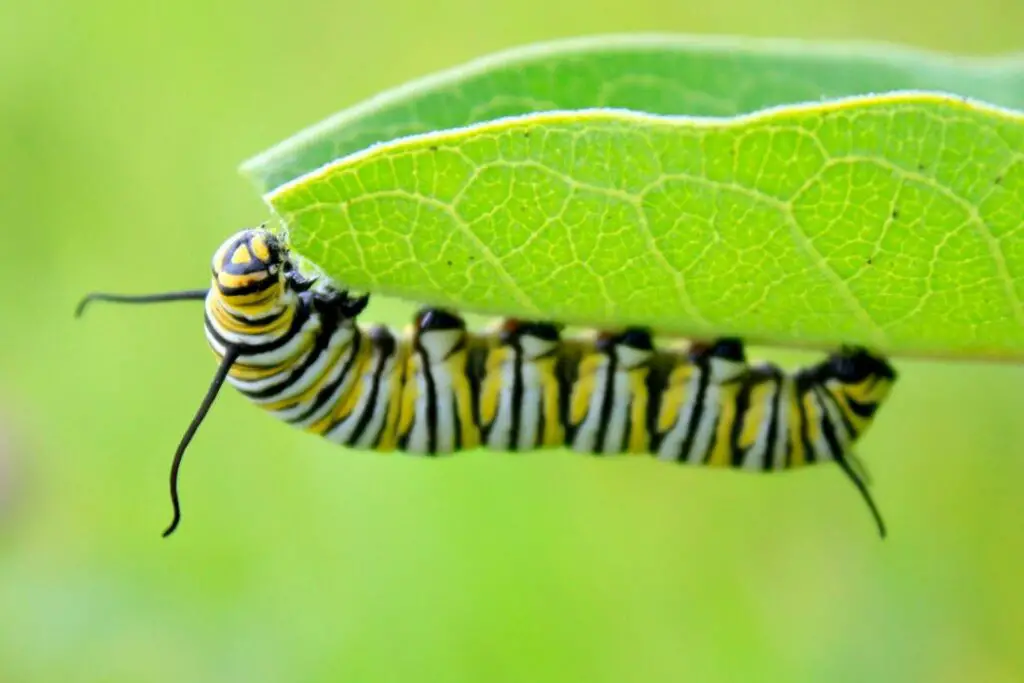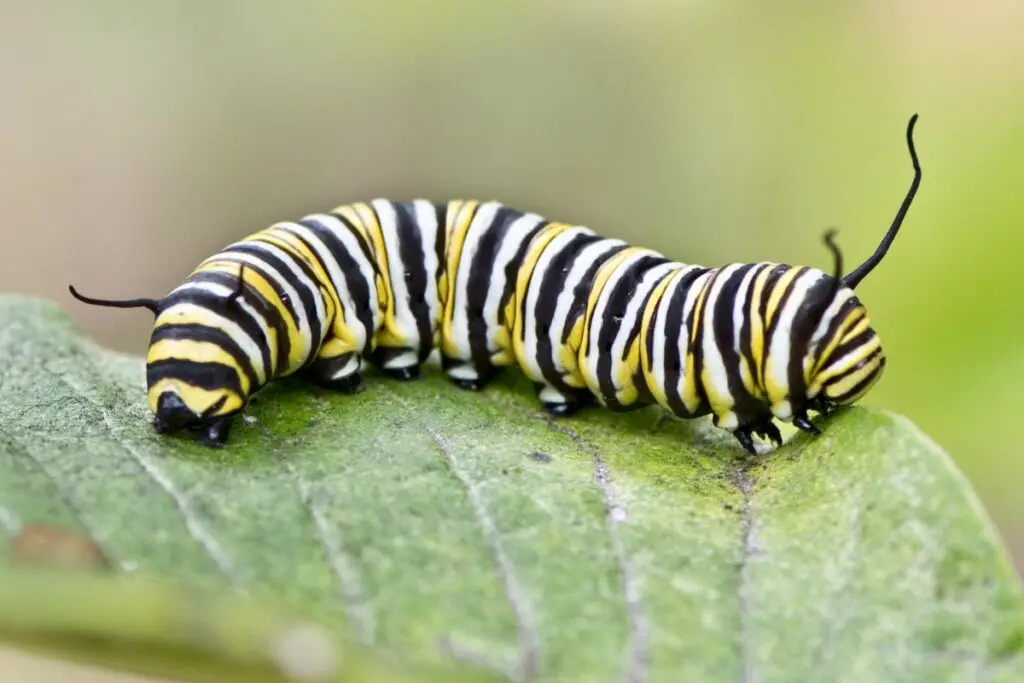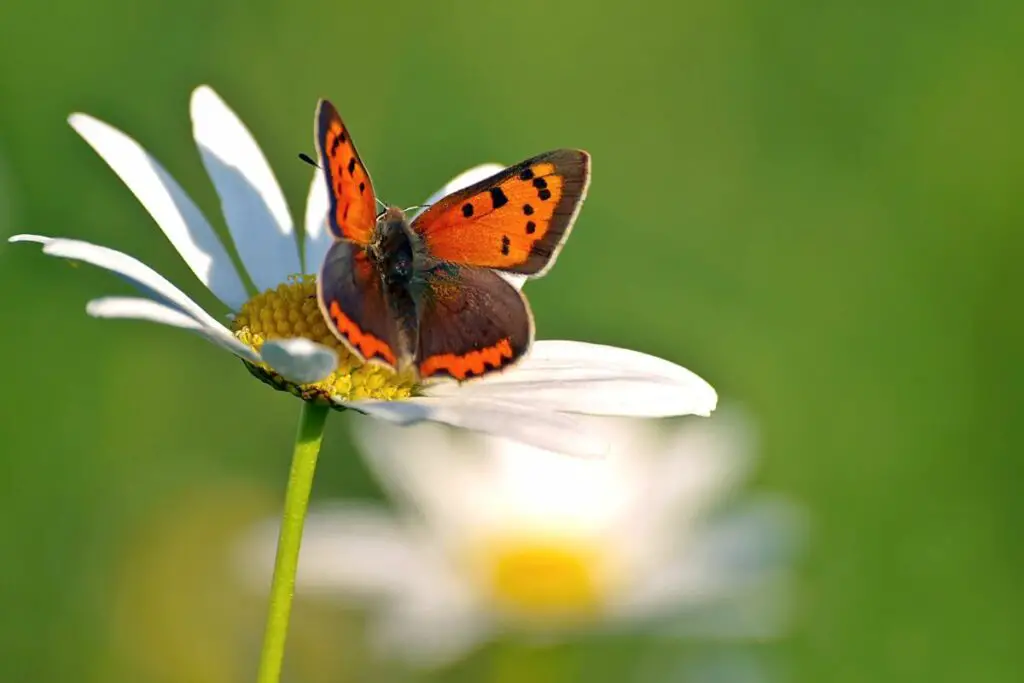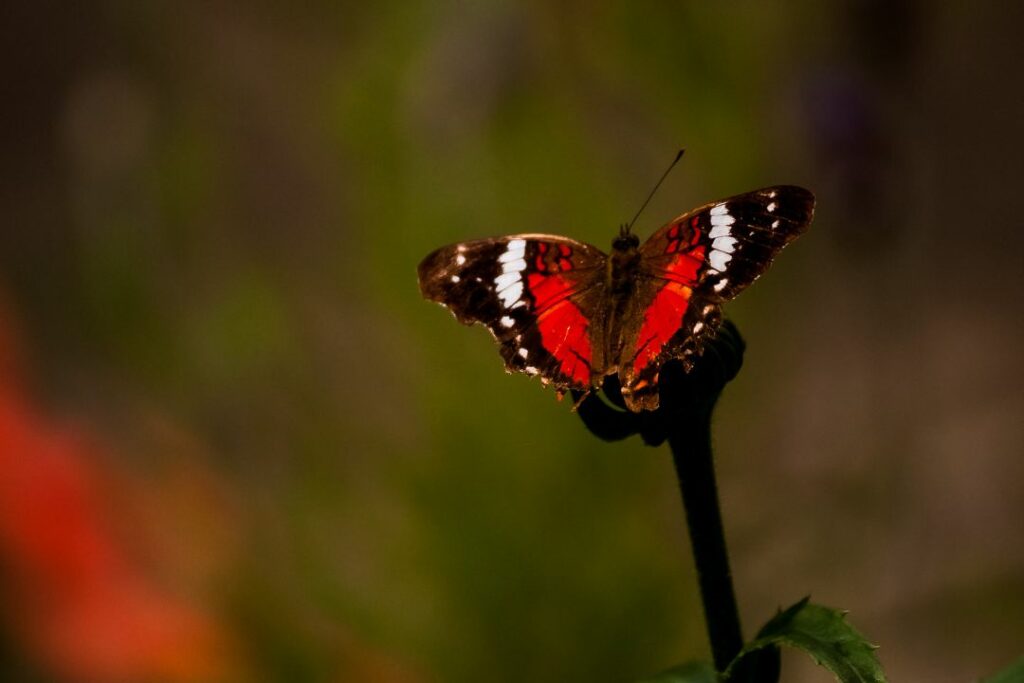Last updated on December 14th, 2023 at 04:58 pm
Have you ever wondered what caterpillars munch on to fuel their magical transformation into butterflies and moths?
From leaves to an occasional surprising delicacy, these crawling connoisseurs have a varied palette that directly impacts their survival and the ecosystems they inhabit.
So buckle up as we dive into the leafy greens and beyond to understand the culinary world of caterpillars. Trust us; it’s a journey with more twists and turns than a caterpillar on a leafy trail!
The Basics of Caterpillar Diets
Let’s nibble into the basics of what caterpillars eat. Knowing a caterpillar’s diet isn’t just a “fun fact”. Understanding their role in the garden and the animal kingdom is crucial.
Leaves (the garden’s green buffet)
Leaves are the bread and butter—or should we say, the main course—for most caterpillars. You’ll find these hungry caterpillars chomping down on leaves like no tomorrow.
From common garden greens to wild grasses, leaves serve as a fundamental source of nourishment for these critters.
*Have you ever wondered what happens to all this food? Find out in do caterpillars poop?
Beyond leaves (stems and flowers)
Caterpillars aren’t just about that leaf life. They have a varied menu extending to other plant parts like stems and flower petals.
Caterpillars feed on various plants, making your garden an all-you-can-eat buffet. Some species prefer the blossoms, while others might go for the stalk. It’s a full-course meal!
But there are a few exceptions to this rule that have opted to evolve into predators of the insect world!
*Caterpillars on drugs – Yes, you read that right. Some caterpillars feed on plants that contain natural substances like nicotine or pyrrolizidine alkaloids to help boost their immune systems. Imagine that, nature’s pharmacy!
Meat lovers (carnivorous caterpillars)
Some caterpillars have a palate that leans carnivorous. A particular species or two feasts on aphids and even carcasses (talk about changing the game).
These rebels didn’t get the memo that caterpillars are supposed to be herbivores. They’ll happily eat most small insects, including:
- Aphids: Tiny but a favourite snack for certain carnivorous caterpillar species.
- Ant Larvae: Some caterpillars raid ant nests for these nutritious morsels.
- Beetles: Yep, even these hard-shelled guys aren’t safe.
- Soft-bodied Insects: Think of small flies or other vulnerable insect species.
- Other Caterpillars: It’s a bug-eat-bug world out there; some caterpillars will eat their own kind.
- Insect Eggs: Certain caterpillars may consume eggs of other insects for a quick protein kick.
These are the exceptions, but they illustrate just how diverse and fascinating the diet of caterpillars can be. So next time you see one, you might wonder: herbivore or tiny predator? 🐛
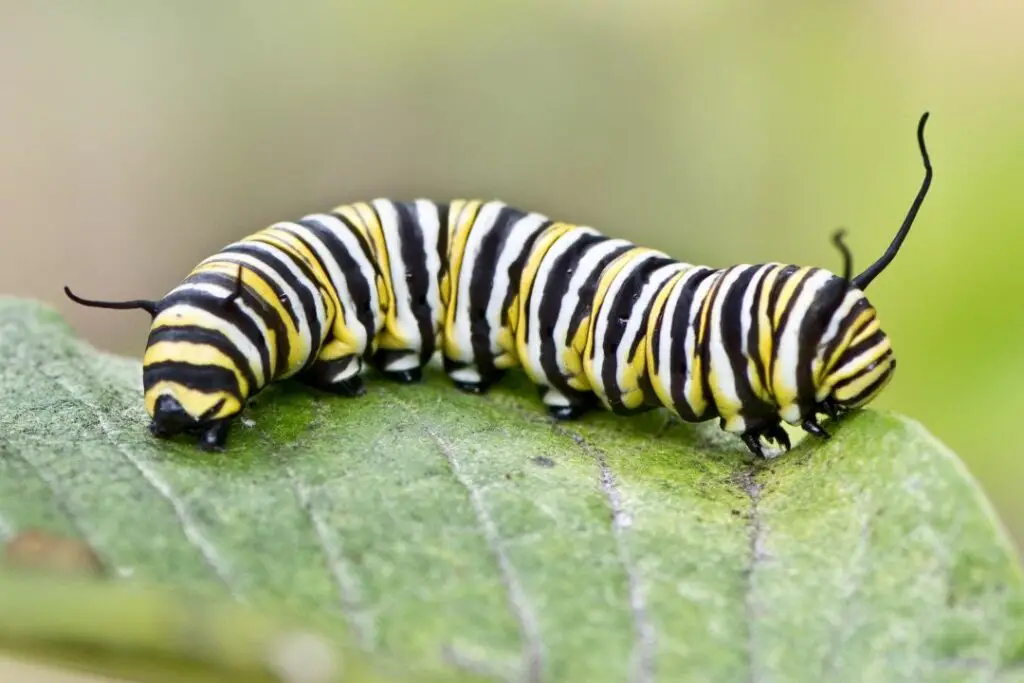
Why It Matters
So why is a caterpillar’s diet such a big deal? Well, it’s not just about keeping them full and happy.
The food they munch on has far-reaching consequences that extend from their tiny, segmented bodies to a massive change that’s about to happen.
The role of diet in metamorphosis
Firstly, let’s talk about transformations. A caterpillar’s diet is the rocket fuel for its metamorphosis into a butterfly or moth.
A balanced diet leads to a successful transformation. If they don’t get the proper nutrients, the whole metamorphosis gig can go sideways, so the stakes are high!
And beyond transforming, food plays a crucial role in a caterpillar’s lifespan and growth. Hungry caterpillars munch away to store energy for their adult stage.
We’re looking at stunted growth and a reduced lifespan if they don’t get the proper nutrients. We can see this happen in real-time with species that feed on a broader range of plants living longer.
Get the full low down on one of nature’s most incredible makeovers in our step-by-step on how a caterpillar becomes a butterfly.
What nutrients do caterpillars need?
Caterpillars need a blend of proteins, fats, and trace minerals for growth.
Proteins and fats are essential for tissue growth, while the correct set of minerals ensures healthy development.
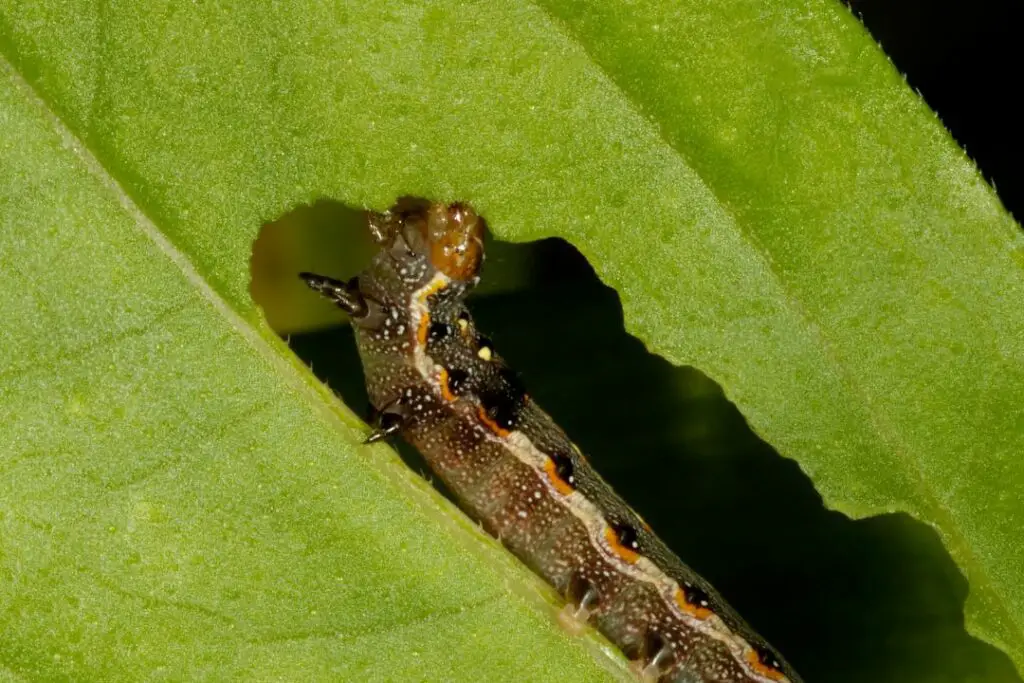
Diet & Predators
Have you ever considered how a caterpillar’s diet could turn it into a “yuck” or a “yum” for predators?
Certain plants offer chemical defences that make caterpillars distasteful to predators like birds. So, the predator species in a given area can directly influence what kinds of plants caterpillars feed on.
Plants that pack a punch
Some caterpillars are pretty strategic about their dining choices. They pick plants that contain toxins, like the alder or certain wild grasses. These toxins act as a chemical shield, deterring predators from taking a bite.
And it’s not just a one-way benefit; these plants often attract caterpillars, serving as host plants that offer a safe dining experience.
So, the next time you see a caterpillar chowing down, it could be as much a survival strategy. They’re tiny strategists in a big, complex world. 🐛
*Sneaky mimics – Some caterpillars have evolved to look like bird poop or twigs to avoid getting eaten. That’s some next-level hide-and-seek!
The Human Impact
Humans have their fingerprints all over the natural world, including the lunch plate of a caterpillar.
Your daily actions might ripple through the food chain to these tiny critters. Spoiler alert: the impact is substantial.
How does human activity affect what caterpillars eat
From pesticides to habitat destruction, human activities are altering what caterpillars eat, not in a good way.
The widespread use of pesticides in gardens and farms can disrupt natural eating habits, pushing caterpillars to feed on non-traditional or unhealthy food sources. This can mess with their growth and, in turn, disrupt the broader ecosystem.
The importance of preserving natural habitats
If you’re asking, “Why should I care?” Well, here’s the scoop. Caterpillars are vital for the ecosystem. They’re food for a variety of animal species, and they later turn into pollinators like butterflies and moths.
Saving their habitats, like forests, grasslands, and even your local wood patches, helps ensure they have the diverse diet they need to thrive. Yes, think of it as meal prepping for Mother Nature!
How pesticides can disrupt natural eating habits
Spritz a little here, a little there, and bam, you’ve got fewer pests, right? Maybe so, but pesticides can also disrupt the menu for our little caterpillar friends.
Some pesticides can wipe out the plants they prefer, forcing them to feed on less nutritious alternatives. In the worst-case scenario, they might starve or ingest the toxic chemicals, neither ending well.
We’re not fans here at Revive a Bee.
You can do the same without harming the caterpillars by using natural alternatives like neem oil, insecticidal soaps, or introducing predator species that naturally control pests.
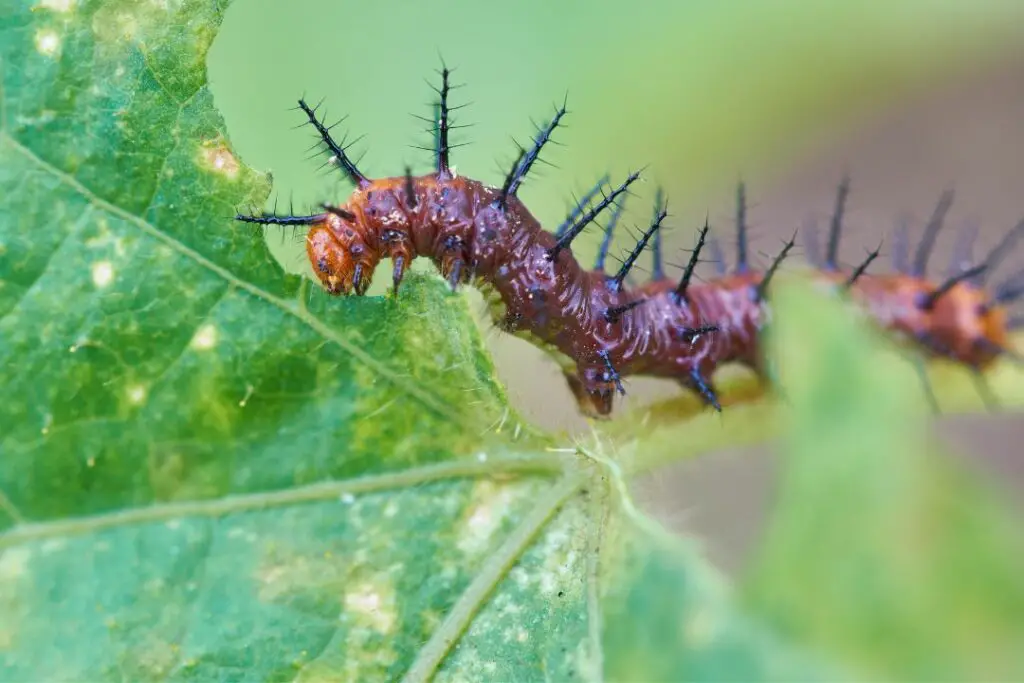
What You Can Do To Help
Ready to be a caterpillar hero? It’s simpler than you might think. First off, diversify your garden. Including various plants (especially native species) provides caterpillars with a perfectly balanced diet.
Aim to include host plants known for attracting and nourishing specific caterpillar species. Here are some caterpillar-friendly plants we recommend adding to your garden:
- Milkweed: A must-have for Monarch caterpillars.
- Dill: Perfect for the Black Swallowtail.
- Oak trees: Like the food court for all sorts of caterpillars.
- Cherry trees: Rich in nutrients and a favourite among many.
- Alder: Not just a wood, but a caterpillar haven.
You see, a thoughtful approach to our gardens and natural spaces can have a ripple effect on these tiny, munching miracle workers. So grab your green thumbs, and let’s give these caterpillars a seat at the table! 🌿🐛

